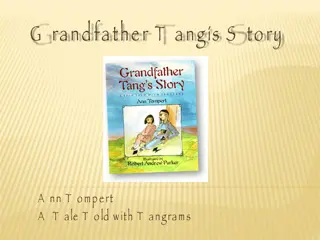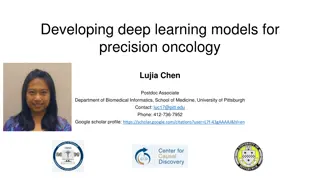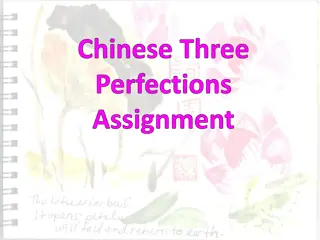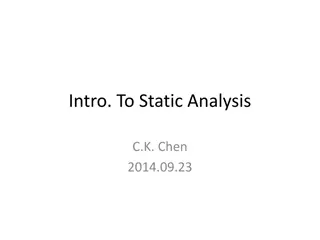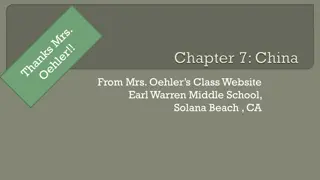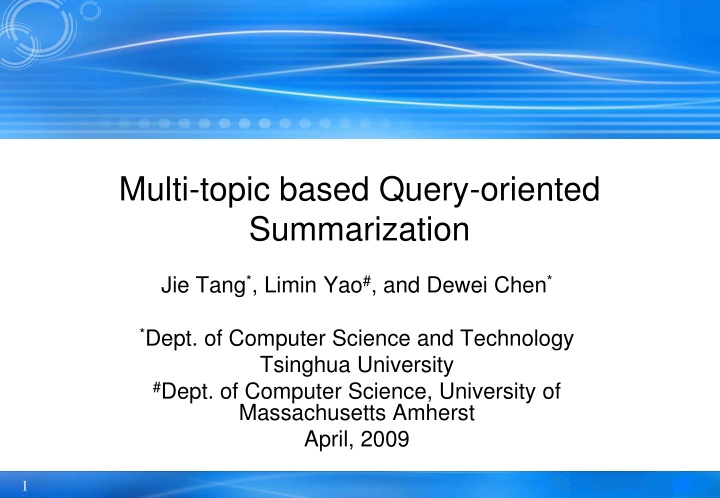
Query-Oriented Topic Summarization Solutions
Explore the research on multi-topic-based query-oriented summarization by Jie Tang, Limin Yao, and Dewei Chen. The study delves into identifying major topics in returned documents, statistics on multi-topic coverage, challenging questions in topic identification and summary extraction, and the proposed solution using topic smoothing, modeling, and the query LDA model. The outline covers related work, modeling of query-oriented topics, LDA, topic modeling with regularization, summary generation, and more.
Download Presentation

Please find below an Image/Link to download the presentation.
The content on the website is provided AS IS for your information and personal use only. It may not be sold, licensed, or shared on other websites without obtaining consent from the author. If you encounter any issues during the download, it is possible that the publisher has removed the file from their server.
You are allowed to download the files provided on this website for personal or commercial use, subject to the condition that they are used lawfully. All files are the property of their respective owners.
The content on the website is provided AS IS for your information and personal use only. It may not be sold, licensed, or shared on other websites without obtaining consent from the author.
E N D
Presentation Transcript
Multi-topic based Query-oriented Summarization Jie Tang*, Limin Yao#, and Dewei Chen* *Dept. of Computer Science and Technology Tsinghua University #Dept. of Computer Science, University of Massachusetts Amherst April, 2009 1
Query-oriented Summarization What are the major topics in the returned docs? However ? 2
Query-oriented Summarization What are the major topics in the returned docs? However ? Statistics show: 44.62% of the news articles are about multi-topics. 36.85% of the DUC data clusters are about multi-topics. 3
Multi-topic based Query-oriented Summarization ? Topic-based summarization 4
Multi-topic based Query-oriented Summarization ? Challenging questions: How to identify the topics? How to extract the summary for each topic? Topic-based summarization 5
Our Solution Summary generation Topic smoothing Topic modeling Generate the summary based on the discovered topic models Employ a regularization framework to smooth the topic distribution Proposal of a query LDA (qLDA) model to model queries and documents together 6
Outline Related Work Modeling of Query-oriented Topics Latent Dirichlet Allocation Query Latent Dirichlet Allocation Topic Modeling with Regularization Generating Summary Sentence Scoring Redundancy Reduction Experiments Conclusions 7
Related Work Document summarization Term frequency (Nenkova, et al. 06; Yih, et al. 07) Topic signature (Lin and Hovy, 00) Topic theme (Harabagiu and Lacatusu, 05) Oracle score (Conroy, et al. 06) Topic-based summarization V-topic: using HMM for summarization (Barzilay and Lee, 02) Opinion summarization (Gruhl, et al. 05; Liu et al. 05) Bayesian query-focused summarization (Daume, et al. 06) Topic modeling and regularization pLSI (Hofmann, 99), LDA (Blei, et al. 2003) TMN (Mei, et al. 08), etc. 8
Outline Related Work Modeling of Query-oriented Topics Latent Dirichlet Allocation Query Latent Dirichlet Allocation Topic Modeling with Regularization Generating Summary Sentence Scoring Redundancy Reduction Experiments Conclusions 9
qLDA Query Latent Dirichlet Allocation Doc-specific topic dist. Query-specific topic dist. topic coin topic 10
qLDA 11
Topic Modeling with Regularization The new objective function: with 12
Outline Related Work Modeling of Query-oriented Topics Latent Dirichlet Allocation Query Latent Dirichlet Allocation Topic Modeling with Regularization Generating Summary Sentence Scoring Redundancy Reduction Experiments Conclusions 13
Measures for Scoring Sentences Four measures: Max_score, Sum_score, Max_TF_score, and Sum_TF_score. Max_score #sampled topic z in cluster c Sum_score Max_TF_score #word w in cluster c # all word tokens in cluster c Sum_TF_score 14
Redundancy Reduction A five-step approach Step 1: Ranking all Step 2: Candidate selection (top 150) Step 3: Feature extraction (TF*IDF) Step 4: Clustering (CLUTO) Step 5: Re-rank 15
Outline Related Work Modeling of Query-oriented Topics Latent Dirichlet Allocation Query Latent Dirichlet Allocation Topic Modeling with Regularization Generating Summary Sentence Scoring Redundancy Reduction Experiments Conclusions 16
Experimental Setting Data Sets DUC2005/06: 50 tasks and each task consists of one query and 20-50 documents Epinions (epinions.com): in total 1,277 reviews for 44 different iPod products Evaluation Measures ROUGE Parameter Setting T=60 for DUC and T=30 for Epinions 2000 sampling iterations 17
Comparison Methods TF: term frequency pLSI: topic model learned by pLSI pLSI+TF: combination of TF and pLSI LDA: topic model learned by LDA LDA+TF: combination of TF and LDA qLDA: topic model learned by the proposed qLDA qLDA+TF: combination of TF and qLDA TMR: topic model learned by the proposed TMR TMR+TF: combination of TF and TMR 18
Comparison with the Best Comparison with the best system on DUC05 Comparison with the best system on DUC06 20
Case Study 22
Distribution Analysis T=60 T=250 Topic distribution for in D357 (T=60 and T=250). The x axis denotes topics and the y axis denotes the occurrence probability of each topic in D357. 23
Outline Related Work Modeling of Query-oriented Topics Latent Dirichlet Allocation Query Latent Dirichlet Allocation Topic Modeling with Regularization Generating Summary Sentence Scoring Redundancy Reduction Experiments Conclusions 24
Conclusion Formalize the problems of multi-topic based query- oriented summarization Propose a query Latent Dirichlet Allocation for modeling queries and documents Propose using regularization to smooth the topic distribution Propose four measures for scoring sentences based on the obtained topic models Experimental results show that the proposed approach for query-oriented summarization perform better than the baselines. 25
Thanks! Q&A 26



